Swimming can actually be quite difficult. In fact, really challenging for some, especially when you haven't learned it yet.
But don't worry; you'll learn it now.
As I mentioned, I've found my 19 best tips on how you can learn to swim easily and quickly - the right way. Hopefully, you can use a few of these tips to help you on your way to better and more natural swimming (at least, that's my goal).
After swimming for over 10 years, I should have learned something useful that you can hopefully use.
Swimming is almost elemental in a country like Ireland, where we are surrounded by water.
So, shall we get started?
Put on your swimming trunks/swimsuit, grab your swim goggles, and let's get into the water.
Swimming consists of 4 styles + an extra
You may already know freestyle, but there are also 3 other styles of swimming that you should be familiar with. Namely, breaststroke, backstroke, and butterfly. And then a combination of all these 4 styles, which is called the Medley.
- Freestyle is the style that most people know and is the fastest (in terms of world records)
- Breaststroke, on the other hand, is the style that most people swim. Many confuse it with “grandma-style swimming,” where the head is always above water
- Backstroke is somewhat like freestyle, but on your back
- Butterfly, on the other hand, is the most physically demanding and technically the most challenging swimming style

Why it's good to take swimming lessons
Swimming has many benefits, and if you want to enjoy them, it's essential to get the technique right. That's why it's a good idea to take swimming lessons.
Swimming is healthy for both your physique and your mental well-being. The physical benefits include:
-
Cardiovascular training, endurance, conditioning, and toning
-
Refreshing and optimizing effect on the nervous system
-
Strengthening of the immune system and overall health
Additionally, the psychological benefits of swimming include:
-
Stress reduction to a greater extent than other forms of exercise
-
Boosting your energy levels and suitable for morning exercise
-
Establishing, maintaining, and significantly enhancing your self-esteem
-
Increasing your concentration and memory abilities
-
Having an antidepressant effect due to the release of endorphins. These factors make swimming a highly recommended form of exercise for people of all age groups
Tips 1 to 5: General get-started swimming advice
Tip 1 - Start slowly and increase gradually
Many new swimmers make the mistake of thinking they should start by swimming 1000 metres.
Not only is this a bad idea if you can't swim at all, but it's also a bad idea if you haven't swum in several years.
Even though swimming is supposed to be one of the least injury-prone sports, you risk some sort of injury when you start so intensely.
That's also why when I was an elite swimmer, and we came back after a 6-week break, we didn't start by swimming more than 1,500 metres, even though we usually swim 6,000-7,000 metres in a single training session.
You should think the same way when you're starting.
So, a good process is to increase like this if you swim twice a week:
- Weeks 1 + 2: 400 metres
- Weeks 3 + 4 + 5: 900 metres
- Weeks 6 + 7 + 8: 1,200 metres
- Weeks 9 + 10 + 11: 1700 metres
And you can continue gradually until you suddenly find yourself swimming 3,000 metres in a swim training session without it taking many hours.
Tip 2: Find a swimming buddy at the beginning
It may sound trivial, but this is where many people drop out.
If you just go swimming by yourself, it can quickly become a bit lonely and boring.
And it may sound strange because you're swimming by yourself without being able to talk while swimming.
But when you come to the edge after a series or during a break, it's really nice to be able to chat with someone.
It's the same when you're doing weight training and the like. It just makes it a bit easier to go when you're not alone.
And many Irish adults would like to swim because it's such an easy sport to get started with, but they probably just need that extra push, which you also do.
Alternatively, you can go to the swimming pool with your kids once a week, and while they play in the “play pool,” you can do your laps in the training pool. This way, you're still not alone with it all, and it becomes more of a pleasure than a duty.

Tip 3: Join a swimming club near you
And this is where you can really learn to swim properly.
Because even though you can just go to the swimming pool and swim by yourself with your swimming buddy, you'll have a hard time teaching yourself the right technique.
The solution here is simply to join a swimming club where you, together with your swimming buddy, can learn the proper swimming technique from the start.
In addition to the advice/tips/exercises I'm giving you below, you'll also need someone who can continuously correct your swimming for the better.
Because it's hard to see when you're swimming in the water yourself.
Furthermore, it means that you both have fixed swimming times each week, which you can plan other things around.
It also means that you don't have to pay for entry to the swimming pool every time, which can quickly become expensive if you only train once a week. You can avoid this by joining a swimming club near you.
You can also consider getting private swimming lessons, where you are the focus all the time.
Tip 4: Become comfortable in the water first
Are you one of the many hundreds of thousands who have difficulty with water in general?
Then you are certainly not alone.
But it's one of the most important things to get a handle on right from the start.
Otherwise, you'll never learn to swim properly.
A good three-step rocket to follow to address this quite significant problem is:
- Find a spot in the pool where you can touch the bottom and go in until it's knee-deep
- Find an edge and hold onto it while the water comes up to your chest and near your neck
- Have someone you trust around you and try to submerge your head
And there you have it. Now, you've already overcome the biggest hurdle and are ready to learn how to swim, which is significantly easier when you're comfortable in the water and know in your head that nothing serious can happen.
Tip 5: Start with simple breaststroke
When many people start swimming, they think they need to be a 100-metre butterfly swimming champion.
They definitely don't.
Instead, you should start with the easiest style of them all: breaststroke.
In breaststroke, you can hardly do anything wrong, which can be a relief for many beginners.
In breaststroke, you can hardly avoid moving forward a little, and it's difficult not to stay afloat.
It's also the type of swimming that many people naturally start doing when they can't swim, but still get in the water.
In essence, the breaststroke is about making a large circle with your arms and almost a frog-like kick with your legs.
This way, you push the water away from you with your arms, just as you do with your legs.
Yes, I understand it sounds easier than it actually is.
But the advice is simply to start with this style, and later on, you can learn the other more technical styles like freestyle, butterfly, and backstroke.
Tips 6-10: Necessary swimming equipment
When you're starting to learn to swim, you simply can't do without dedicated swimming equipment.
To put it plainly: it will make your learning much faster and easier since these are designed to facilitate swimming, especially in the beginning when you can't float or swim forward.
So, please read on below, where you'll get the 5 most essential pieces of swimming equipment so you can learn to swim in the right and quickest way.
Tip 6 - Use a pull buoy
This piece of swimming equipment is probably one of the most overlooked among swimmers in general, and that's a real shame. Just like many other new swimmers, you probably have trouble keeping your legs up on the water's surface, am I right?
If that's the case, then a pull buoy is exactly what you need. We recommend one that sits comfortably between your legs, even over extended periods. So, you should choose a pull buoy that provides sufficient buoyancy and has an optimal shape. We recommend two of our most popular pull buoys:
- Watery Luxe Pull Buoy here
- Speedo Elite Pull Buoy here
The idea behind such a buoy is that you place it between your legs, and since it's made of special rubber, it will automatically float towards the water's surface. If you hold onto the pull buoy firmly, your legs will follow it up to the water's surface. Voilà, your legs will be right where they should be, in the correct swimming position, where you create the least water resistance.
Additionally, a pull buoy can shift your focus away from your legs, allowing you to keep them still while concentrating on your arm stroke and its form. It's an excellent idea to focus on specific aspects of swimming to improve it.
And for that purpose, a pull buoy is simply brilliant.
Tip 7 - Use a kick board
This is a bit like the “reverse” of a pull buoy, but here, you get the opportunity to take your arms out of the equation and focus on your leg kicks, keeping them going continuously.
A kick board is absolutely essential for this purpose. Ideally, a kick board should be lightweight, have good buoyancy, and be comfortable to use.
We recommend the Watery Heat kick board here.
4.89/5
Based on 57 reviews

Watery kickboard - Heat - Dark blue
Because often, the legs are the biggest challenge for new swimmers, as they tend to be neglected quite quickly, for inexplicable reasons.
The result is that the legs practically drag along the pool bottom. This certainly doesn't keep you horizontal, which is the optimal swimming position.
Tip 8 - You'll never swim properly without a snorkel
When many people start swimming, they absolutely hate swimming with their heads underwater.
As a result, their heads remain above the water while the rest of the body struggles along the bottom.
This is neither optimal for swimming nor particularly good for the body.
The solution is to use a snorkel. For training, a snorkel should be of the front-snorkel type, and it should have a comfortable head strap for extended use.
We recommend the Arena Swim Snorkel specifically.
With such a snorkel, you are required to keep your head underwater and look down towards the pool bottom. It also helps you breathe, so you don't have to think about it.
It's actually quite ingenious, and it's a shame that not more new swimmers discover what such a snorkel can actually help with.
So, get one if you want to learn to float properly and correctly in the water from the start. It's an excellent tip from me.
Tip 9 - Get a pair of swim goggles sooner rather than later
Again, similar to the previous advice, but a pair of proper swim goggles can also work wonders.
Unfortunately, many people think they:
- Look silly with them (you might too, but doesn't everyone?)
- They leave red marks around the eyes (they don't if you choose a good pair that can be adjusted to fit you)
- They are annoying to swim with (but isn't it more annoying to get red eyes and have water in your eyes all the time when you need to see)
There aren't really any good reasons not to get a pair of swim goggles. So, we have specific recommendations for swim goggles we've tested and that you'll surely be satisfied with.
For leisure swimming:
- Watery Hystrix Flex, which sits comfortably and ensures that water doesn't get in
- Speedo Biofuse Flexiseal, with an extremely comfortable fit even over longer periods
For competitive swimmers:
- Watery Superior Mirror, significantly minimizes water resistance and increases your speed while sitting comfortably and snug
- Speedo Fastskin Speedsocket 2, considered one of the best goggles for elite swimmers, as it fits tightly and minimizes water resistance
For open water and triathletes:
- Watery Mantis, with a super-soft silicone seal and a wide field of view
- Aqua Sphere Kayenne, a highly popular goggle with a smaller frame
For kids:
- Aqua Sphere Moby Junior, for smaller kids aged 1-5 years
- Watery Mantis Kids, perfect for kids aged 6-12 years with a wide field of view
- Aqua Sphere Vista, for older kids aged 6-15 years
It will just make your swimming much more comfortable and enjoyable because you won't have to focus on WHERE you're swimming, but more on HOW you're swimming. It's an important difference to consider.
As a small disclaimer, some people can actually swim perfectly well without goggles. But that's not the case for most. So, try a pair of (good) swim goggles, and I promise you'll notice a significant difference in your swimming.
If you want a more in-depth guide to recommended swim goggles, you can find the goggles I recommend for swim training here, the ones I recommend for triathlon here, and the ones I recommend for kids here.
Tip 10 - Swim fins are probably the best for beginners
They say you should save the best for last.
And that's what we're doing here with swimming equipment because if you're only going to get one piece of gear, it should be a pair of swim fins.
They help you immediately address the biggest problem new swimmers have: maintaining a horizontal body position in the water. With a pair of fins on, your feet will automatically stay on the water's surface without you having to make much effort.
Furthermore, EVERYONE can swim with swim fins. It doesn't require any special adjustment or training with them. You simply put them on.
And you can't really avoid that swim fins make swimming much more fun. Now you won't be lagging behind and feeling like you're not making any progress. No, you'll just zoom past everyone who used to overtake you. It's like comparing a Toyota to a Ferrari. With a pair of swim fins, you'll instantly upgrade to a real Ferrari.
So, if you want to take your swimming to a new level, consider getting a pair of swim fins.
Tip 11: Avoid open water swimming at the beginning
Simply put, it's not a good idea to start with open water swimming.
If you find swimming difficult in a pool, you'll likely find it even more challenging in open water. In open water, you won't be able to see much beyond a few swimming fish, and when you can't orient yourself, it can be quite frightening.

In open water, you also have to consider many other factors, such as motorboats, other swimmers, kayakers, etc., and it can be quite chaotic, especially during the summer.
So, it's best to avoid open water swimming, even though it may look inviting in the summer. Also, keep in mind that you may need a wetsuit for open water swimming, which can quickly become expensive.
Tip 12: Don't try anything too wild
As explained earlier, many make the mistake of attempting various swimming techniques when they haven't even learned to swim properly. It's essential to start simple and progress gradually.
A good progression might be:
- Start by practising “bubbling,” where you submerge your head, exhale, and come back up. Start by exhaling through your mouth and then through your nose
- Practice floating, ideally for as long as possible. You can have someone support your lower back until you can do it on your own
- Finally, work on your leg kicks against a wall. Hold onto the wall with your hands and kick gently with your legs. Soon, you'll be able to keep your entire body nearly at the water's surface
Only after mastering these fundamentals should you start actual swimming. It's essential to have the basics in place before trying more advanced techniques, even if they seem more exciting.
Tip 13: Don't give up (because everyone can learn to swim)
Yes, it's that simple. Many people give up after a few swims, thinking they should be able to swim naturally.
But you can't. Learning to swim correctly takes patience from the beginning.
For some, it takes a few months to learn to swim reasonably well, while for others, it can take several years, depending on their goals.
But it's possible for everyone, regardless of their body type and attitude, to learn to swim. The key is to be patient and persistent.
Don't forget to celebrate small victories along the way. Just being able to float can be a significant accomplishment for some, and it's essential to acknowledge these achievements. Then, your goal can be to swim 50 metres and continue to progress.
Tip 14: Don't compare yourself to all the “good swimmers” around you
Many people make the mistake of comparing themselves to the experienced swimmers who always seem to pass them.
This isn't healthy for your self-esteem or confidence, and it won't improve your swimming either.
Instead, adjust your mindset to consider that these swimmers were once where you are now and faced similar challenges.
Nobody can swim automatically; some may have a natural talent, while others swim seven or eight times a week and become good at swimming as a result.
If you only swim once or twice a week, you won't be able to swim at the same pace as them. But that's perfectly okay; nobody expects you to.
While it's a good goal to aim to surpass someone who has always overtaken you, it shouldn't affect your mood or motivation for training.
Tips 16 to 19: Good swimming principles to follow
When many people start swimming, they think they should just go as fast as possible.
However, this is one of the worst things you can do.
Instead, pause for a moment and learn the most fundamental principles of swimming correctly, so you can swim fast and avoid unnecessary injuries.
These principles are based on the “crawl” stroke but can generally be applied to other swimming styles.
GET A DISCOUNT CODE WITH 10% OFF
The discount code can be used by all new customers on all products on the website, including the products recommended here in the article.
What are you waiting for? Get more out of your time in and on the water!
Tip 16: Head and body position
A good horizontal swimming position starts with how your head and core are positioned in the water.
One of the biggest mistakes novice swimmers make is looking forward while swimming, both above and below the water.
This disrupts your body position, making it more vertical, which only slows you down in the water.
Instead, lower your head so that you're looking directly down, following the line below you. Breathe to the side to maintain this horizontal position.
A good way to practice this is by using a snorkel.
Tip 17: Get your legs moving
Without using your legs, they will simply sink to the bottom, no matter how good you are at floating.
Even more experienced swimmers, like myself, will experience this.
So, you lose the horizontal body position we discussed earlier when you don't use your legs.
In the crawl stroke, your legs should kick up and down alternately, continuously, and not in “sets.”
Your feet should not come out of the water; only your heels should slightly break the surface. Kicking in the air doesn't provide propulsion.
A good way to ensure a constant leg kick is to use a kick board. Use your arms with the kick board to isolate your legs, and you'll naturally have to use them to prevent sinking to the bottom and gain forward momentum.
Tip 18: Achieve a “high elbow” and create a “catch” underwater
It's no secret that your arms and the pressure they exert on the water are what provide the most speed and propulsion in swimming. You need to understand this when swimming.
Arms should be where you exert most of your effort, while your legs are mainly there to keep you horizontal in the water.
Regarding your arms, it's crucial to maintain a “high elbow” when bringing your arm forward. This prevents your arm from hitting the water and creating resistance.
Underwater, you should create a “catch” on the water's surface. You can do this by achieving a “high elbow” underwater, bending your arm to form a 90-degree angle.
Rather than pushing your arm straight through the water, you should use this angle to maximize the surface area your arm pushes against the water.
This can also be achieved more effectively using “finger paddles,” an additional type of paddle that attaches to your fingers, giving you more surface area to push against the water. It's something I generally recommend to all types of swimmers.
Tip 19: Engage your core
Now that you've mastered your head, legs, and arms, none of it will work if you don't engage your core.
If you don't engage your core, your entire core will tend to sink towards the bottom, preventing you from achieving the horizontal position crucial for swimming effectively.
To learn to engage your core, you can use a pull buoy and a snorkel. Also, simply think about pulling your core towards the surface, and it will automatically engage, helping you maintain a more taut and horizontal position in the water. This not only enhances your swimming but also prevents problems with your lower back after swimming training.
Quick Takeaways
We've reached the end of the 19 tips from my 10 years as an elite swimmer. I hope they were useful and can help you get started with swimming more easily.
To make it as easy as possible for you to take something away from here, I've compiled the 19 tips so you can become a top-notch swimmer in no time:
Tip 1 - Start slowly and increase gradually
Tip 2: Find a swimming buddy in the beginning
Tip 3: Join a swimming club near you
Tip 4: Gain confidence in the water first
Tip 5: Begin with simple breaststroke
Tip 6 - Use a pull buoy
Tip 7 - Use a kick board
Tip 8 - You'll never swim properly without a snorkel
Tip 9 - Get a pair of swim goggles early on
Tip 10 - Swim fins are probably the best for beginners
Tip 11. Avoid swimming in open water to start with
Tip 12: Avoid trying anything too wild
Tip 13: Don't give up (because anyone can learn to swim)
Tip 14: Don't compare yourself to all the “good swimmers” next to you
Tip 16: Head and body position
Tip 17: Get your legs moving
Tip 18: Maintain a “high elbow” and ensure a “catch” underwater
Tip 19: Engage your core
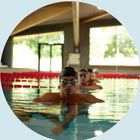
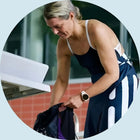
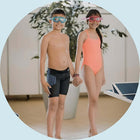
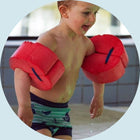
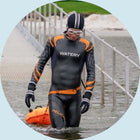
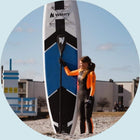
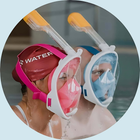
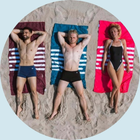

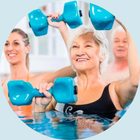
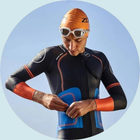
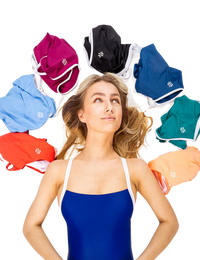
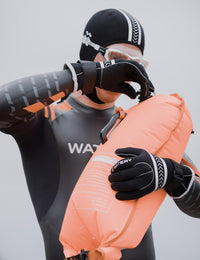
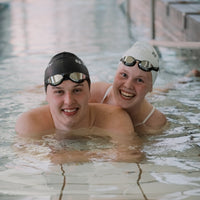














![[FREE GIFT 1] Watery earplugs](http://watery.ie/cdn/shop/files/activeearplugs-blue-1-klartilhjemmeside_1_2_d66304d0-3b01-490e-ac51-8cff659ba150.jpg?v=1768392135&width=200)
![[FREE GIFT 2] Watery Anti-Fog Spray](http://watery.ie/cdn/shop/files/1_8fa9a41d-737d-48b9-8976-59046b5d7f6a.jpg?v=1764791464&width=200)
![[FREE GIFT 3] Watery waterproof mobile case - Storm - Black](http://watery.ie/cdn/shop/files/Designudennavn_16_58bb54e1-1352-48e2-886e-468370189acc.png?v=1768392134&width=200)
![[GRATIS GAVE 4] Watery waterproof bum bag - Talia - Blue](http://watery.ie/cdn/shop/files/WateryTaliaBumBag-Blue_1_5cc1b961-5fe7-49d7-8e3f-f894e48765a4.jpg?v=1768392135&width=200)